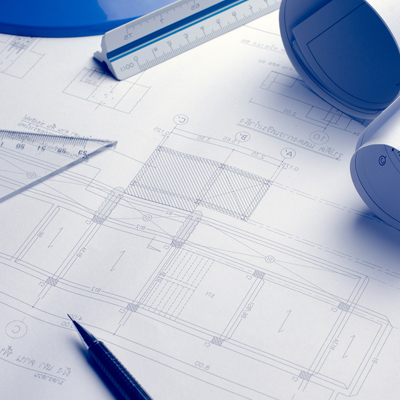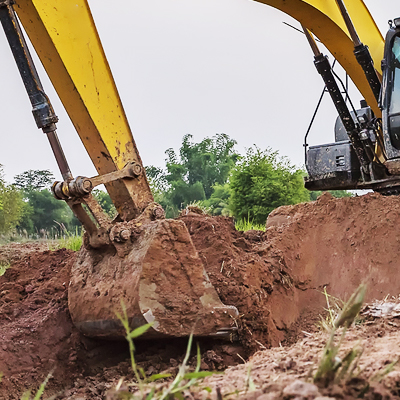Slope Stabilization
Slopes with steep gradients that are prone to instability or erosion frequently require some type of stabilization or retaining wall to ensure safety and continuity. This can apply to the restoration of existing structures, new construction, or as temporary solution during the construction process.
Common reasons why slope stabilization is required include the addition of deep excavations or deep cuts, existence of a landslide-prone slope, necessity for a retaining wall, or general stabilization prior to construction.
The most commonly used technique for slope stabilization is soil nails. This method allows for the construction of retaining walls from the top down without needing to excavate the soil behind the wall. During soil nailing, reinforcing bars are driven into the ground at a downward slope and then grouted in place. Benefits of soil nailing include speed of installation, flexibility in applications, necessity for only small, highly portable equipment, requirement of minimal space for construction, and the minimal impact on surrounding structures and land. The following additional techniques are also used for slope stabilization: helical tiebacks, metal & composite sheet piles, chemical grouting, rock anchors and anchor walls.
Gibson’s Pressure Grouting has the engineers with expert industry knowledge to both design and install proper techniques for slope stabilization. Contact our specialists today to learn more about our customized services.
Common reasons why slope stabilization is required include the addition of deep excavations or deep cuts, existence of a landslide-prone slope, necessity for a retaining wall, or general stabilization prior to construction.
The most commonly used technique for slope stabilization is soil nails. This method allows for the construction of retaining walls from the top down without needing to excavate the soil behind the wall. During soil nailing, reinforcing bars are driven into the ground at a downward slope and then grouted in place. Benefits of soil nailing include speed of installation, flexibility in applications, necessity for only small, highly portable equipment, requirement of minimal space for construction, and the minimal impact on surrounding structures and land. The following additional techniques are also used for slope stabilization: helical tiebacks, metal & composite sheet piles, chemical grouting, rock anchors and anchor walls.
Gibson’s Pressure Grouting has the engineers with expert industry knowledge to both design and install proper techniques for slope stabilization. Contact our specialists today to learn more about our customized services.


